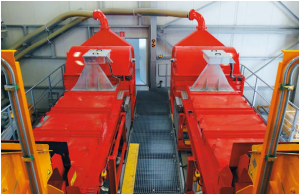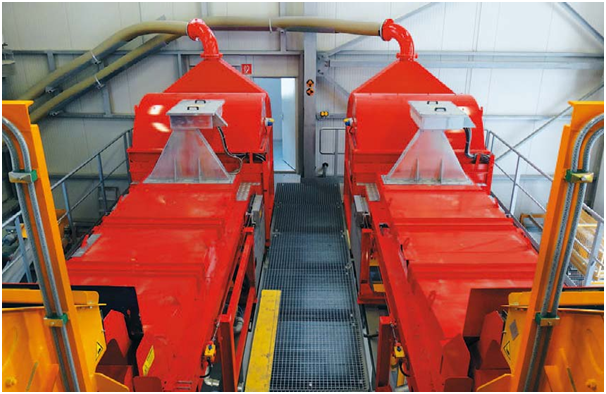
Advantages of Pneumatic Conveyors Over Mechanical
Before investing in one method over another, you must determine whether the materials are suitable for a pneumatic solution. Pneumatics are most often used with non-abrasive, non-fragile materials that have fairly low density – typically less than 62 lb/ft3. Ideal materials include flour, sugar, plastic granules, zinc oxide, hydrated lime or carbon.
Other Materials
Higher throughput is achievable if particle size is consistent, but materials that are inconsistent such as fibres or wood chips are still suitable for pneumatic conveying, especially if you use a lean phase system (which generally operates at lower pressures). These systems are also suited for toxic materials that should not leak into the air, using vacuum pressure rather than positive pressure for example.
Easy Installation Over Long Distances
Mechanical systems are typically difficult to install, re-route or extend. By contrast, pneumatic tubing can turn sharp corners so is easier to route or re-route around obstructions, or to elevate without investment in extra equipment, concrete foundations and scaffolds. Installation costs are often much the same regardless of the distance.
Easier Maintenance
Pneumatic conveying has fewer moving parts to invest in, maintain and replace. This is a considerable saving in operating costs and there’s less risk of catastrophic failures and down-time. If the material is abrasive, this is even more likely to prove true.
Energy Efficiency
Traditionally pneumatics have been power hungry, but expert design can improve efficiency substantially, especially if you have been using a high pressure system. Consult a company specialising in lean (aka dilute) systems, such as a pneumatic conveying company called Aptech.
Less Dust, Spillage and Noise
Mechanical conveying is more exposed and prone to spillage, dust and noise wherever one part of the system dovetails into another. Spillage costs money in ways other than the loss of materials – health and safety may demand additional equipment to control pollution, decibels and air quality, for example. Using pneumatics, escape of sensitive materials is easily minimised by using vacuum rather than pressure, or enclosing the system in a loop.
Security from Contamination
Conversely, materials transported inside a pneumatic system are protected from dust, insects, and the elements by having fewer entry points. This is important for foodstuffs, or for hygroscopic material that may get damp and clump. Tubing is also easier to purge and clean than countless mechanical components.

Leave a reply